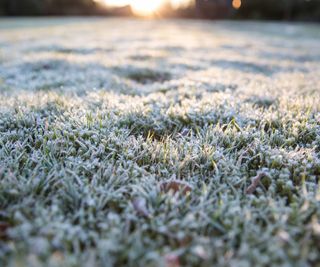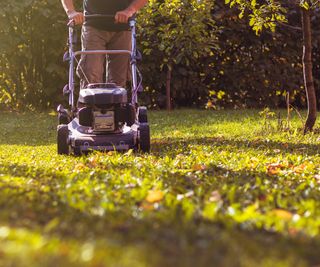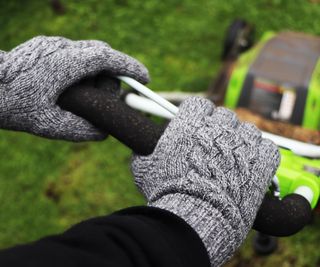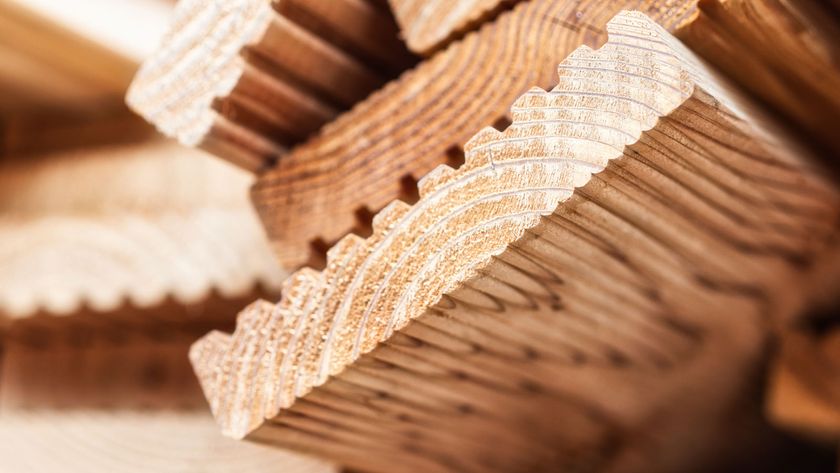Cutting grass in November — the latest advice for UK lawns this winter
Lawn experts share how reading the weather conditions is crucial to knowing when to cut grass in winter

Knowing when to cut grass in winter isn't simply a question of everyone downing tools, or should I say lawnmowers, on a set date each year. It's a matter of playing it by ear and knowing the right conditions for mowing your lawn ideas.
A few years ago, we might have seen temperatures drop, and frost gathering on lawns by November, a sure sign that you'd soon be ready to stop cutting your grass.
However many of us in the UK are still experiencing mild temperatures later and later in the year, without there being the usual signs of when we'll be in the true throes of winter.
Thankfully lawn experts are here to share their tips on reading the weather and ensuring that you're mowing at the right time, in the right way to prevent any damage to your lawn over the harshest months.
Cutting grass in winter for optimum lawn health
"Rather than there being a definitive month when you shouldn’t mow a lawn, it’s usually when the grass has stopped growing and no longer needs to be cut," explains garden expert at My Job Quote Fiona Jenkins.
Whilst this has traditionally been from mid-November, there's no guarantee that temperatures will have dropped low enough by this point for you to stop your lawn care.


A landscaper and gardening expert with over 25 years of experience in the industry. Currently she works for MyJobQuote as their resident expert on all things gardening. She is highly knowledgeable and her expertise have featured in many reputable publications.
When to cut grass in winter
David Hedges-Gower, one of the UK's leading lawn experts, and Chairman of the Lawn Association offers his rule of (green) thumb: "If it doesn’t stop growing, then don’t stop mowing."
"In winter, grass grows at a slower rate due to the colder weather. As a result, it is not necessary to mow your lawn unless the weather is mild and the grass keeps growing," adds Nick Wood, horticulturalist of Gardening Express.
"The soil temperature needs to be between 8-10°C in order for grass to grow, this is why when the weather starts to warm up in spring you will see your lawn slowly come back to life," adds Fiona.
Therefore keeping an eye on weather forecasts rather than calendars is preferable. You should stop cutting your grass altogether if temperatures drop below 5°C. If you do need to continue cutting grass in winter, it should be done a little differently to the rest of the year, as I'll go on to explain.

How to cut grass in winter
If your grass is still growing in winter – and this is a distinct possibility in milder weather – take care when mowing but don't feel you have to avoid it altogether.
"The best way to mow your grass during winter is to raise the cutting blade a little higher than usual," says Nick Wood. "Start off by cutting the longest sections first and working towards shorter areas of grass.
"It's good autumn lawncare practice to remove the clippings from the surface to expose grass to what little sunlight there is and make sure to clear any debris before you begin mowing, like sticks or stones that could damage your mower blades.
"Finally, it is also important to sharpen lawnmower blades regularly for an even cut and to get healthier grass growth in spring," finishes Nick.
Both the best petrol lawnmowers and electric versions will come with a range of cutting blade height positions.

Length of grass in winter
"Mowing your grass too short can weaken the roots and make your lawn more susceptible to winter damage. On the other hand, if the grass is left too long, it may promote pests and diseases during wet weather," says lawn expert at Johnson's Lawn Seed Guy Jenkins.
"If the weather is mild, your grass will continue to grow, and you might find that you need to trim the grass but be sure not to cut more than one-third of the grass length at a time and consider raising the height of your mower for better results," says Guy.
Jason Wilkinson, Founder of Qwickhose suggests you aim for a length of around 2 to 2.5 inches (5 to 6 cm) to provide sufficient protection without causing any issues.

When not to mow grass in winter
"As the temperature drops, keep an eye on the weather forecast, and do not mow your lawn if frost or snow are predicted within the next one to two days. Mowing at this time can stunt the growth of the grass and can even cause long-term damage to the blades of grass as the lawn cannot recover," says Peter Chaloner MD of Cobra Lawnmowers.
"Cutting wet grass is never advisable. This applies at any time of year but wet grass is more likely in autumn and winter," adds Fiona Jenkins.
"Wet grass will tear rather than cut cleanly which can damage it and cause disease to take hold. When the weather is wet, the ground will also be soft. Using a mower in these conditions will lead to compaction of the soil which will be detrimental to the drainage of the lawn, further damaging your grass.
"Even in warmer weather, you should mow your lawn in the afternoon and not in the morning when it still has dew on its surface. Instead, wait until the sun and wind have dried it out. Wet grass also clogs up your mower, leaving clumps on your lawn which you then have to pick up. It can also rust the cutting blade, if not cleaned off properly.
"You should not cut frosty grass which will be brittle, as the water content in the grass blades freezes. Mowing at this time will cause untold damage to your lawn, potentially causing large areas to turn brown which can take a long time to recover," finishes Fiona.

Peter Chaloner is the Managing Director of Cobra, one of the UK's leading brands of garden machinery. He is a passionate enthusiast when it comes to lawn care and seasonal gardening tasks. He takes great pride in maintaining his own lawn and garden to perfection and is knowledgeable about various techniques and tools that can be used to achieve the best results.
FAQs
Is it okay to cut grass in November?
"If the grass is still growing in November, you can cut it as long as it’s dry and frost-free," explains garden expert Fiona Jenkins. However, it’s best to raise the cutting blades.
"Leaving the blades too short deprives the grass of its ability to photosynthesize. Remember to only mow your lawn if you’re sure the grass is growing and it’s not waterlogged or frosty," she says.
Is it best to leave grass long or short for winter?
"The best length for grass over the winter is between two and three inches. This helps the grass to survive the cold winter months by giving it enough length to keep photosynthesizing. Longer grass also protects the roots by insulating the surrounding soil from fluctuating temperatures," explains garden expert Fiona Jenkins.
"Leaving the grass long contributes to the suppression of weed seeds while the root systems of grass can also help prevent soil erosion during heavy rain or snow. If the grass is too short during the winter, it can struggle to access water and nutrients by reducing the depth of its roots.
"This, combined with the shorter days and lack of sunlight, can cause stress to the grass leaving it weak and vulnerable to disease and fungal infections," she says.
When should you first cut grass after winter?
Although March is often suggested as the best time to carry out the first lawn cut of the year, it is often a case of using your common sense. If the winter has been a mild one then you may well find you need to mow sooner than this.
This first mow after winter needs to be done with a little care. The RHS suggest choosing the highest blade setting on your mower "to avoid choking the mower with clippings."
They go on to say that should the grass have got really long, a quick strim and rake might be required before mowing. The best cordless strimmers are great for tackling hard-to-reach areas of grass that have begun to get too long.
It is also helpful to bear in mind that experts recommend keeping grass between 25mm and 50mm long and that you should avoid removing more than a third of the grass blade length at once.
For more advice on how to take care of your garden during cold weather, have a look at our expert tips for preparing a garden for winter.
Get the Homebuilding & Renovating Newsletter
Bring your dream home to life with expert advice, how to guides and design inspiration. Sign up for our newsletter and get two free tickets to a Homebuilding & Renovating Show near you.

Teresa was part of a team that launched Easy Gardens in 2018 and worked as the Editor on this magazine. She has extensive experience writing and editing content on gardens and landscaping on brands such as Homes & Gardens, Country Homes & Interiors and Living Etc magazine. She has developed close working relationships with top landscape architects and leading industry experts, and has been exposed to an array of rich content and expertise.
In 2020 Teresa bought her first home. She and her partner worked alongside architects and builders to transform the downstairs area of her two bedroom Victorian house in north London into a usable space for her family. Along the way she learned the stresses, woes and joys of home renovation, and is now looking to her next project, landscaping the back garden.









